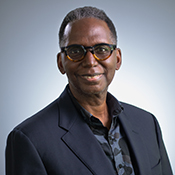To narrow your search, enter a faculty member's name, title, school/college/department or profile. Click on the letter of the alphabet corresponding to the first letter of faculty member’s family name.
- About Temple
- Japan Campus (TUJ)
- Basic Facts about TUJ
- TUJ History
- Our Mission & Vision
- Strategic Priorities & Key Objectives
- Meet the Dean
- Faculty and Staff
- Thomas J. Dreves - General Counsel
- Masami Kamozawa - Chief Financial Officer
- Chie Kato - Senior Associate Dean / Associate Dean, Enrollment Management
- Paul Raudkepp - Chief Information Officer / Chief Operating Officer
- Yasuko Taoka - Associate Dean for Academic Affairs
- Leslie A. Tirapelle - Associate Dean for Library and Learning Innovation
- May-yi Shaw - Chief of Staff
- Board of Overseers
- Community Relations
- Strategic Partnership information
- Main Campus
- Temple University, Japan Campus – Kyoto
- GIVING to TUJ
- For Alumni
- Alumni
- Tokyo Chapter
- Benefits
- Events
- OWL RECOGNITION: Distinguished Alumni Award
- Past Graduations
- TUJ Spirit Shop
- Alumni
- TUJ Photo Gallery
- Japan Campus (TUJ)
- Admissions
- Programs
- Undergraduate
- Graduate College of Education
- Beasley School of Law
- Master in Management Program
- Master of Science in Communication Management (TUJ Kyoto)
- Academic English Program
- Continuing Education
- Corporate Education
- Research and Creative Works at TUJ
- Institute of Contemporary Asian Studies (ICAS)
- Services & Facilities
- Study Rooms & Students Spaces
- Library
- Information Technology Services
- Counseling Services
- The Learning Center
- Testing Services
- Registrar's Office at Temple University, Japan Campus (TUJ)
- Online & Hybrid Courses
- Accessibility Services
- Career Support
- Internship Interviews
- Student Intern Interviews
- Student Intern Interview: Ryuto Thai
- Student Intern Interview: Nao Sawaguchi
- Student Intern Interview: Natsumi Sugiura
- Student Intern Interview: Hana Mohsin
- Student Intern Interview: Reina Arisaka
- Student Intern Interview: Anastasio Villano
- Student Intern Interview: Candy Fujisawa
- Student Intern Interview: Ian Skversky
- Student Intern Interview: Rikako Sho
- Student Intern Interview: Cristian Etpison Nicolescu
- Student Intern Interview: Naomi Sanyika Moore
- Student Intern Interview: Mingli Huang
- Student Intern Interview: Adio Alexander
- Student Intern Interview: Kamile Chelsea Penilla
- Student Intern Interview: Ahmet Yumusak
- Student Intern Interview: DOME CORPORATION
- Student Intern Interview: Wayne Guo
- Student Intern Interview: Jonnathan Kwon
- Student Intern Interview: Embassy of Afghanistan - Tokyo
- Student Intern Interview: Lena Knue
- Student Intern Interview: Amani Kidd
- Student Intern Interview: Wisdom Mantsey
- Student Intern Interview: Shoko Ito
- Student Intern Interview: Fengxuan Liu
- Student Intern Interview: Aiko Shigeta
- Student Intern Interview: Federico Farani
- Student Intern Interview: Hitomi Nakamura
- Student Intern Interview: Seito Utamaru
- Intern Interview: Samuel Roux
- Intern Interview: Tetsujin Hirose
- Intern Interview: Steven Tang
- Intern Interview: Sean To
- Intern Interview: Michael Allen
- Intern Interview: Sangaamaa Enkhtuvshin
- Intern Interview: Chaoyi Jiang
- Intern Interview: Maggie Lindrooth
- Intern Interview: Tomosuke Nakada
- Intern Interview: Peter Schwarz
- Intern Interview: Alexa Weaver
- Intern Interview: Masahito Yamasaki
- Intern Interview: Brendan White
- Company Interviews
- Company Interview: DOME CORPORATION
- Company Interview: Audi Japan KK
- Company Interview: IBM
- Company Interview: Delta Air Lines
- Company Interview: Okinawa Institute of Science and Technology Graduate University (OIST)
- Company Interview: GE Capital
- Company Interview: Kanagawa Sohgoh High School
- Company Interview: Texas Instruments Japan
- Internship Interview Video List
- Student Intern Interviews
- Students
- Alumni
- Employers
- Career Outcomes
- Career Support: Past Events
- Internship Interviews
- TUJ CARE Team
- Campus Floor Guide
- News
- TUJ News - Click here for full page
- TUJ in the Media
- 2025
- 2024
- TUJ in the Media: December, 2024
- TUJ in the Media: November, 2024
- TUJ in the Media: October, 2024
- TUJ in the Media: September, 2024
- TUJ in the Media: August, 2024
- TUJ in the Media: July, 2024
- TUJ in the Media: June, 2024
- TUJ in the Media: May, 2024
- TUJ in the Media: April, 2024
- TUJ in the Media: March, 2024
- TUJ in the Media: February, 2024
- TUJ in the Media: January, 2024
- 2023
- TUJ in the Media: December, 2023
- TUJ in the Media: November, 2023
- TUJ in the Media: October, 2023
- TUJ in the Media: September, 2023
- TUJ in the Media: August, 2023
- TUJ in the Media: July, 2023
- TUJ in the Media: June, 2023
- TUJ in the Media: May, 2023
- TUJ in the Media: April, 2023
- TUJ in the Media: March, 2023
- TUJ in the Media: February, 2023
- TUJ in the Media: January, 2023
- 2022
- TUJ in the Media: December, 2022
- TUJ in the Media: November, 2022
- TUJ in the Media: October, 2022
- TUJ in the Media: September, 2022
- TUJ in the Media: August, 2022
- TUJ in the Media: July, 2022
- TUJ in the Media: June, 2022
- TUJ in the Media: May, 2022
- TUJ in the Media: April, 2022
- TUJ in the Media: March, 2022
- TUJ in the Media: February, 2022
- TUJ in the Media: January, 2022
- 2021
- Announcement
- Events

